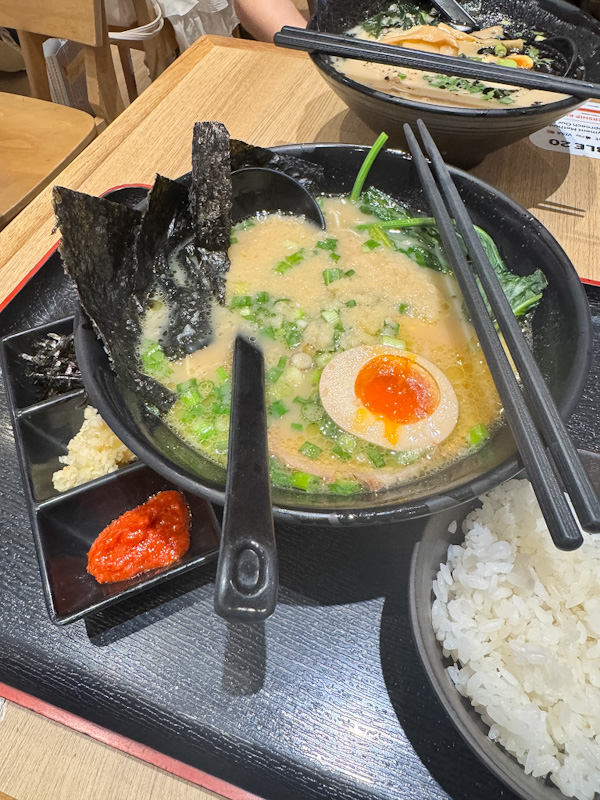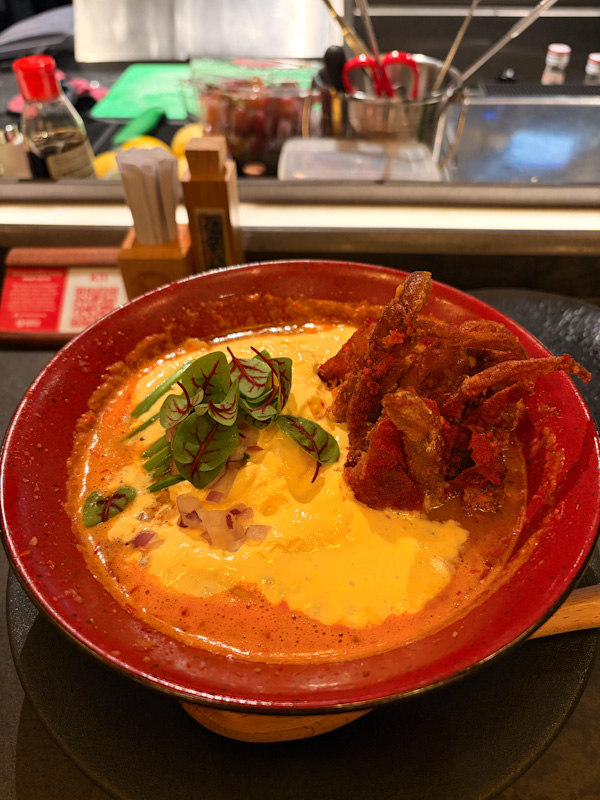WHAT WE ATE
- Original Mazesoba, 85/100 (30 July 2022, Gyoza Bar)
- Torikoku Ramen, 65/100 (updated 30 July 2022, Gyoza Bar)
- Spicy Ramen, 60/100 (15 May 2022)
Update: Finally got to try their Mazesoba!
Ramen made with chicken stock as the base tends to have a lighter flavor, resembling the taste of familiar chicken-flavored instant noodles. Fortunately, that’s not the case here. Despite its lighter profile compared to other types of ramen, it still maintains a satisfying richness. It’s easy to understand why this place is popular; the ramen pairs well with drinks. However, what’s even better is their Mazesoba. I wasn’t a fan when I tried it years ago, but I’m glad to have discovered a newfound love for it here.
On a side note, they also have a second floor called Gyoza Bar. The ambiance is reminiscent of a speakeasy and quite delightful. It’s a great spot to enjoy a few drinks alongside some delicious gyozas, which I must say are among the best I’ve ever had.
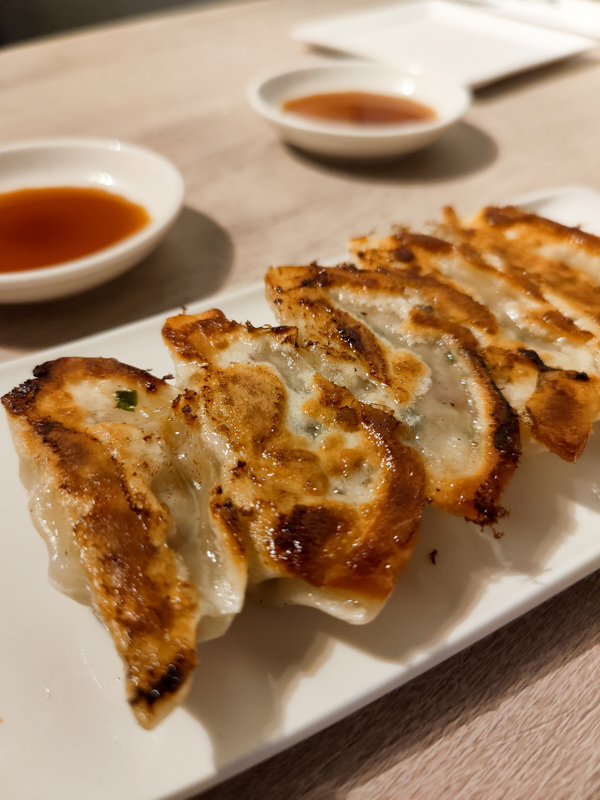
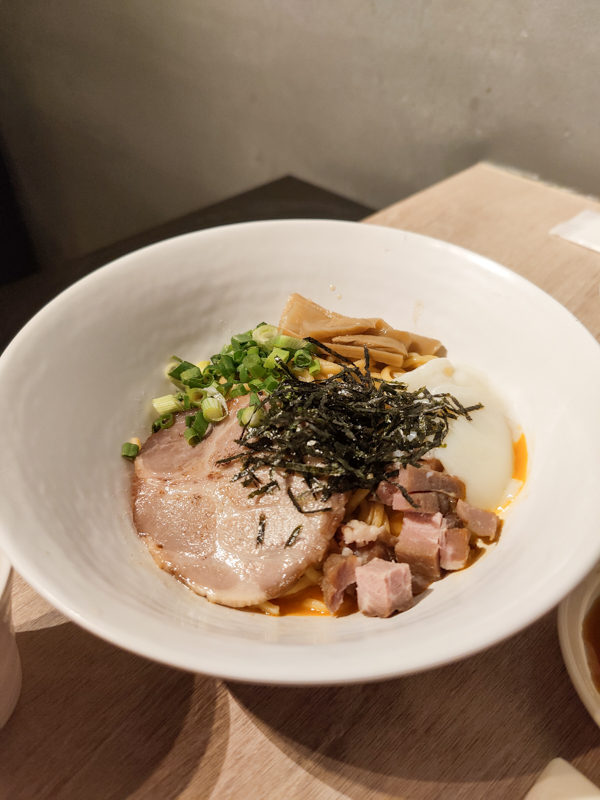
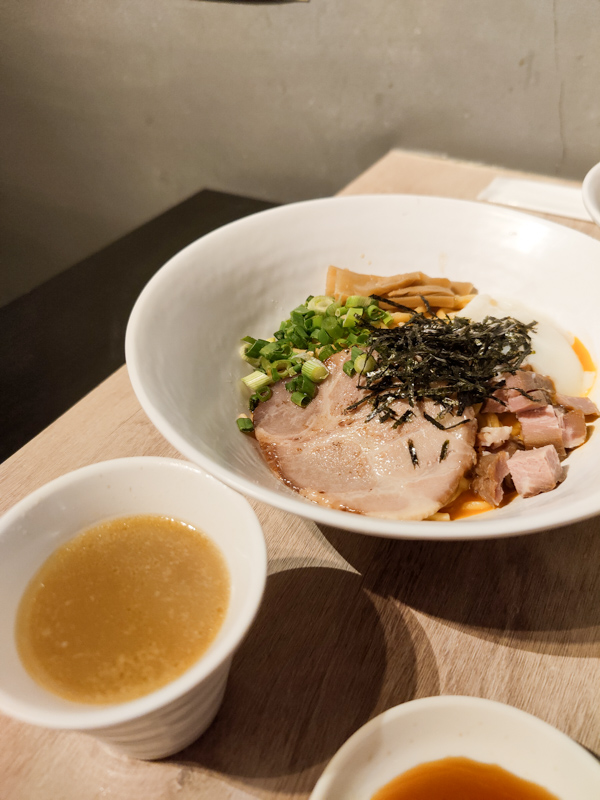
ORIGINAL MAZESOBA 85/100 points
Noodle – 30/35
The noodles in the Mazesoba are thick and springy, often referred to as ‘qq’. Their chewy texture sets them apart from traditional soup ramen. The overall flavor of the noodles is excellent, and they absorb the sauce beautifully.
Sauce – 30/35
Since this is a dry ramen without soup or broth, we’ll focus on the critical component of Mazesoba: the sauce! It’s a savory, sweet sauce with a subtle hint of bonito once mixed in. The umami richness is truly delightful.
Meat – 20/20
There are two types of meat in this dish: regular Chashu and pork cubes. The Chashu is tender and flavorful, likely the same as the one used in their soup ramen. The cubes have a slightly saltier taste but complement the savory sauce exceptionally well.
Toppings – 5/10
Instead of the marinated ramen Tamago, they use an Onsen egg in the Mazesoba. The egg shines when mixed in, coating the noodles with its rich yolk. Other toppings include bamboo shoots, seaweed, and negi. However, the bamboo shoot may have a slightly pungent flavor that might not appeal to everyone. While most toppings are average, the standout is a small cup of peppery soup that accompanies the noodles, reminiscent of “Bak Kut Teh,” and it complements the meal wonderfully.
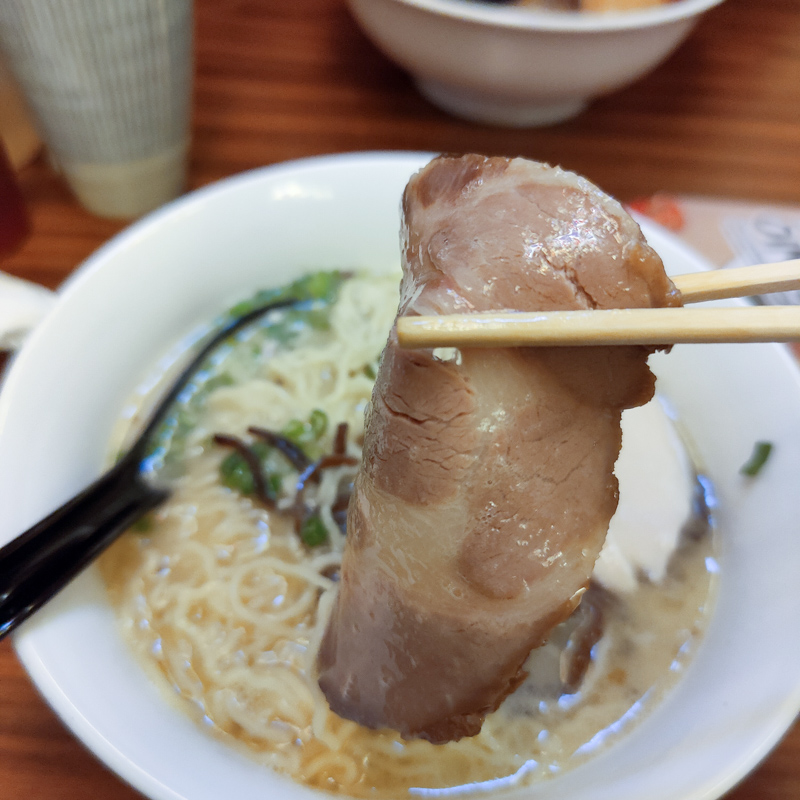
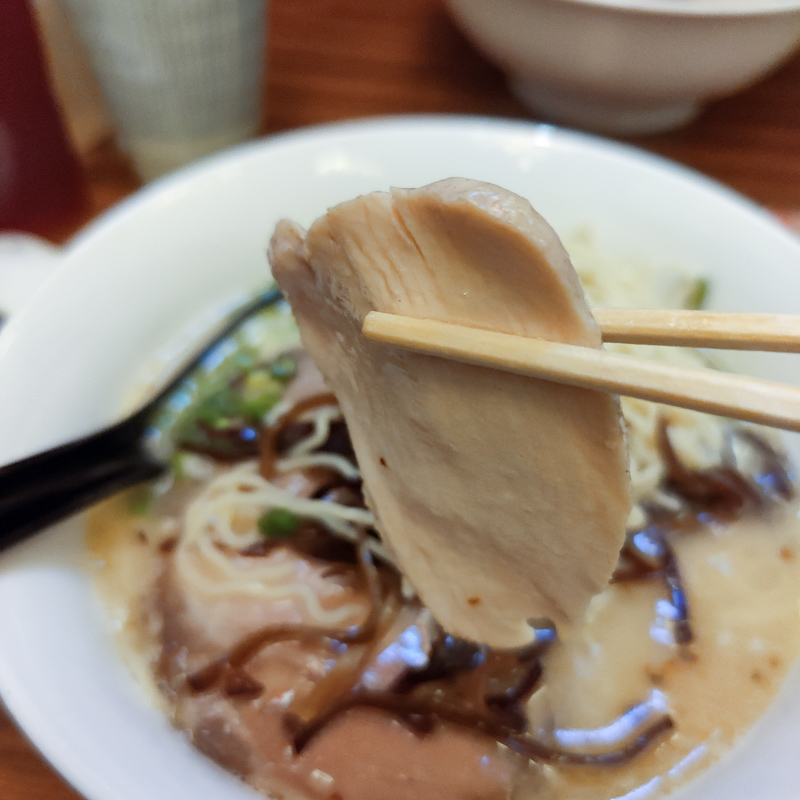
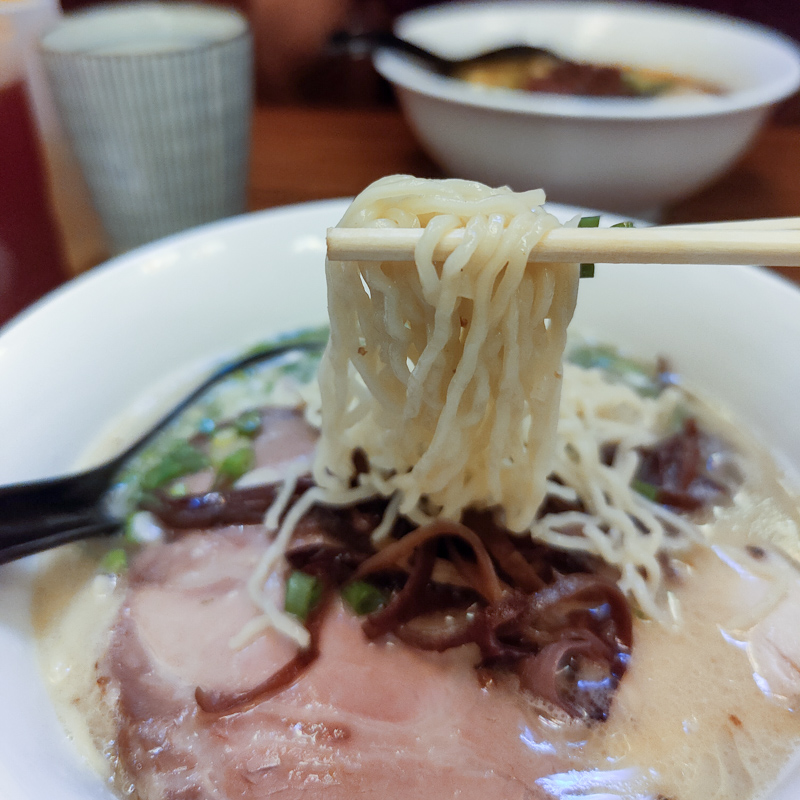
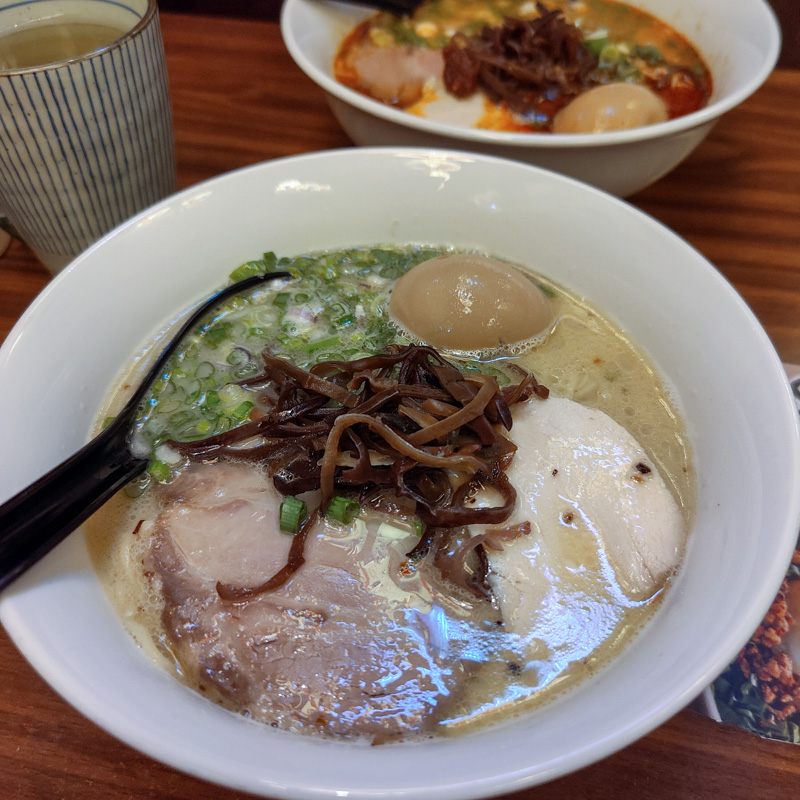
TORIKOKU RAMEN 65/100 points
Noodle – 25/35
The noodles in Torikoku Ramen are wavy and slightly chewy. They resemble the type of noodles typically found in Shoyu ramen but are thinner. While the noodles don’t leave a strong impression in terms of flavor, their texture is remarkably smooth.
Soup – 25/35
Touted as the “no.1 rich chicken soup in Singapore,” the broth boasts a slightly opaque appearance, indicating the long hours of brewing. However, for those accustomed to Tonkotsu ramen, this broth may seem light and thin. Nevertheless, it’s still a decent broth, with subtle hints of aroma from the chicken stock and a touch of fried garlic or shallots. This lighter ramen would likely pair well after a night of drinking.
Meat – 15/20
The ramen features two types of meat: Chashu and chicken fillet. The Chashu’s mild flavor complements the lighter broth beautifully, offering a gentle hint of porkiness and a touch of savoriness. The Chashu also boasts a unique smooth texture, raising questions about its composition—perhaps pork isn’t the only ingredient at play. As for the chicken fillet, although it may appear plain, it holds its own against its pork counterpart. Overall, the meat in this ramen is quite satisfying.
Toppings – 0/10
The yolks in the eggs I had were disappointingly dry and overcooked, lacking the gooey yolk texture I anticipated. However, what truly detracted from the experience was their excessive saltiness. The inclusion of black fungus and negi (green onions) did little to elevate the toppings. On a positive note, the crunchy black fungus provided a pleasant contrast to the overall smoothness and silkiness present in the noodles and meat.

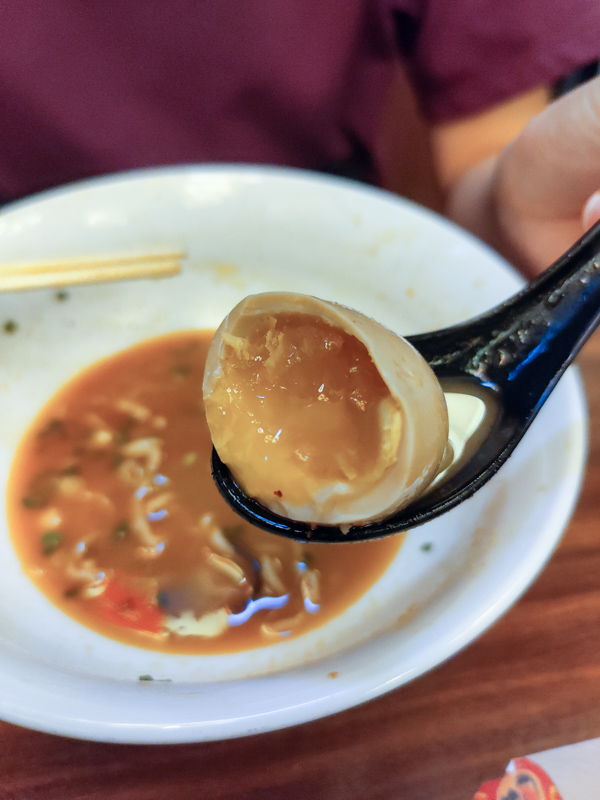
SPICY RAMEN 60/100 points
Noodle – 25/35
The same noodles used in their soup ramen are also used here in the Spicy Ramen. The noodles are wavy and slightly chewy. They resemble the type of noodles typically found in Shoyu ramen but are thinner. While the noodles don’t leave a strong impression in terms of flavor, their texture is remarkably smooth.
Soup – 15/35
The base broth is likely the same as the Torikoku ramen, but the addition of the spicy topping tends to overpower the other flavors. The spiciness in this ramen is quite intense and even a bit suffocating. While it doesn’t render the dish inedible, it does dampen the overall experience for me.
Meat – 15/20
The Chashu in the Spicy Ramen is the same as the one found in their other soup versions. The ramen features two types of meat: Chashu and chicken fillet. The Chashu’s mild flavor complements the lighter broth beautifully, offering a gentle hint of porkiness and a touch of savoriness. The Chashu also boasts a unique smooth texture, raising questions about its composition—perhaps pork isn’t the only ingredient at play. As for the chicken fillet, although it may appear plain, it holds its own against its pork counterpart. Overall, the meat in this ramen is quite satisfying.
Toppings – 5/10
The Tamago (egg) is identical to the one served in their other ramen dishes, except here the yolk is delightfully runny, as can be seen in the photo. The black fungus and negi (green onions) are also present, offering a nice complement to the meal.
CONCLUSION
The Torikoku ramen is a delightful departure from the typical pork-based ramen offerings. It’s a dish that I can see myself returning to repeatedly, as it provides a comforting and satisfying experience. The broth strikes a perfect balance, with a richness that hits the spot without being overly salty. The overall atmosphere of the restaurant adds to the enjoyment of the meal.
In addition to their soup ramen, they also offer a diverse selection of mazesoba, also known as “Japanese bak-chor mee.” This piques my interest, and I’m already looking forward to my next visit to explore this enticing option.

DISCLAIMER
One man’s meat is another man’s poison.
Find out more about our palettes and how we evaluate our ramen here. 😉

